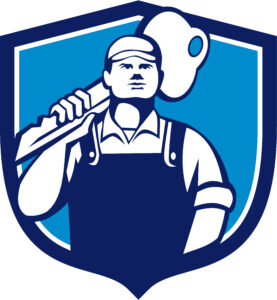Having the good fortune to own rental property allows you to earn passive income. As a landlord, you find that there is nothing ‘passive’ about properties to let. The upkeep, the tenant checks, and all the little things you have to do to keep rentals going smoothly involve work.
Keeping the property secure before and after tenants leave by changing the locks is just another part of your job. If you don’t get this one right, you stand to lose significantly on your investment.
Factors That Influence The Types of Locks You Should Choose
First of all, what type of rental property do you own? Do you do short-term or long-term rentals? You certainly don’t want to be changing the locks every two weeks if you do vacation rentals.
When tenants have left the property, especially if they’ve left on bad terms, you also don’t want them to be able to re-enter it because they have a spare set of keys.
Additionally, you don’t want people being able to easily break the lock of your unoccupied rental while you look for new tenants. This last part is important because the types of locks you choose can make you more vulnerable to break-ins.
How Your Current Locks Can Be Attacked
If you’re like most people, you have what is known as a pin-and-barrel type lock. This is where a notched key fits into a cylindrically shaped barrel. The cylinder features a top and bottom layer of spring-loaded pins.
Once the key with the right notch markings is fitted into the cylinder, it forms what is called the shear line. This is where the pins line up in their unique positions so that when the key is turned, the lock opens.
Unfortunately, this type of lock is open to several types of attacks.
Bump Keys
Burglars can use what is called a bump key to break your pin and tumbler lock. A bump key’s notches are cut to the deepest that exists. The point of this is to trick the pins within the lock cylinder to move when they’re not supposed to.
Then, the burglar only has to strike the inserted bump key with a small hammer or the flat of their hand to get the lock to open.
This method leaves no observable damage. Someone could use it to be in and out of your property and you wouldn’t even know.
Drills and Picks
Drills and picks are the tools of burglars who don’t care to hide that they’ve entered your rental.
They can use a drill bit to create a hole just above the shear line of your lock. Then they use a flathead screwdriver to imitate a key to turn and release the lock.
Lock picking works on similar principles except that smaller objects like paper clips, hair pins, or specialized lock picks are used. The burglar uses them to push the bottom row of pins up to the shear line while turning the lock barrel to open it.
Types of locks you should get
As a rental property owner who has to change locks frequently, one option you should consider is getting locks that rekey.
In a rekeying, the lock remains the same, only the key changes. The lock, in effect, learns to respond to a new key. There are brands that allow you to even do the rekeying yourself.
Get locks with anti-bump features as well. In some of these, the top layer of pins is removed. Others have programmable side bars or pin layers that are longer than usual. All of these are meant to prevent a burglar from being able to “bump” the lock open.
Locks that come with anti-drill and anti-pick features are also a good idea. Some anti-drill locks come with reinforced plates that prevent anyone from drilling into them. Meanwhile, anti-pick locks have specially arranged pin rows.
You can even dispense with keys altogether and go for a keypad lock. This is an electronic lock with a keypad on the door. Once the correct code is entered, the door opens.
Talk with a qualified locksmith to discover which of these options is right for you. We have years in the business of helping people keep their properties more secure. Why not talk to us? Call us at 1-786-358-6116.

